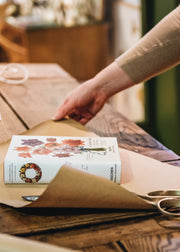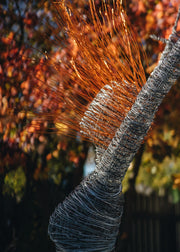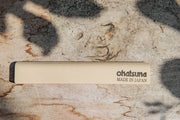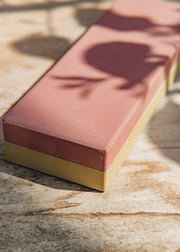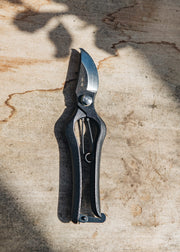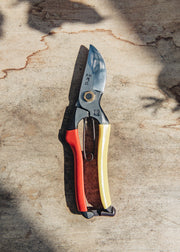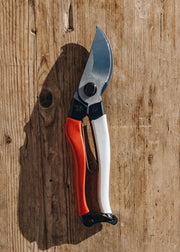Love Your Tools

Tending to your tools can be a wonderfully satisfying process that requires a methodical but surprisingly gentle touch. Looking after your tools is a good habit to form and cleaning and sharpening regularly retains the efficiency of your secateurs and extends the life of these valuable tools.
General Care
- After use, remove plant resin from the blades of the secateurs using Crean Mate and water, then dry.
- Using a soft cloth, wipe over blades with a few drops of Camellia Oil.
- Store secateurs in a dry place.


- New tools remain sharp for some time but will eventually lose their edge with extensive use and then need attention.
- Once you have had them long enough to need sharpening, do so every few weeks while in use.
- Ideally, try not to allow your secateurs to become really blunt, it is easier to sharpen them regularly.
Tools for the job
Sharpening Blunt Secateurs
Place a coarse sharpening stone (Grey, 220 grit) and a regular sharpening stone (Brown, 1000 grit) in water for a few minutes, bubbles will rise to the surface. Both stones have a concave underside to accommodate the curved profile of the main blade.

Use the concave side of the coarse Grey stone and work gently at an angle along the top side of the blade until you feel that it has taken an edge. Ensure that you work evenly round the sharp edge so as not to flatten the shape of the curve. (Try to use the length of the stone, it will last longer if used evenly.)
Turn the secateurs over and still using the Grey stone, remove the burr (a fine line of metal debris from sharpening) from the other side of the curved sharp edge.

Now using the finer Brown stone, repeat the process. This will refine the work you have done with the Grey stone.
Finally, take the Brown stone and gently work over the ‘bypass’ blade (the unsharpened blade which passes the sharpened blade to make a cut) to remove rust or debris.
Keep it regular
- Use this refining process (steps 4 – 5) with the Brown stone for the regular two-weekly treatment that keeps the blade keen rather than having to resharpen from blunt.
- Dry the secateurs and using a soft cloth, wipe over the blades with a few drops of Camellia Oil.
- Store secateurs in a dry place.









